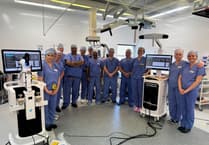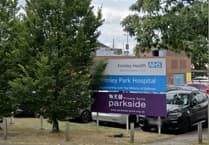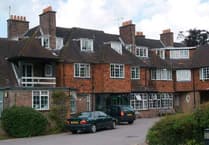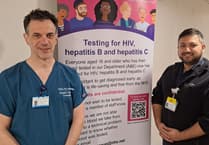South East Coast Ambulance Service NHS Foundation Trust (SECAmb) is rolling out a new clinical pathway aimed at reducing the length of time someone who has fallen waits for a response.
Falls make up a significant number of 999 calls and many do not initially result in significant injury to patients. However, delays to such calls, as ambulance crews are sent to higher priority incidents, can lead to more harmful impacts as patients, who are often elderly, remain on the floor.
With evidence showing that for every hour spent on the floor, the probability of conveyance to hospital increases by 10 per cent, SECAmb recognised it needed to take a different approach to responding to such patients.
Following a successful trial in SECAmb’s Gatwick and Hastings & Polegate operating units, the new pathway, sees the trust’s volunteer community first responders (CFRs) make initial assessments of appropriate patients who call 999 after suffering a fall.
It will begin to roll out across the trust’s region, including Surrey and Hampshire, from January, led by SECAmb’s Community Resilience Team.
The proof-of-concept trial, which began earlier this year, saw 33 specially-trained and additionally-equipped CFRs, who previously only responded to serious emergencies, also responding to calls to falls patients, following triage at the trust’s Emergency Operations Centres (EOCs).
CFRs on the Community Falls Team provide immediate care to reduce risks and, if safe to do, so will assist patients from the floor using specialist lifting equipment. The team is fully supported remotely by trust clinicians at each stage as needed.
The patient then receives a follow-up call from a trust clinician later that day. If the patient’s condition is more complex, an ambulance is dispatched to back up the CFR.
The scheme aims to reduce the number of non-serious incidents awaiting a response and ensure ambulance crews are as available as possible to attend more serious calls. It also aims to lower the risk of patients who have suffered a fall from deteriorating from a potential ‘non-injury’ fall, to them requiring a 999 ambulance response and potentially transport to hospital. To date, more than 150 patients have benefitted from the scheme.
SECAmb consultant paramedic for urgent and emergency care, Andy Collen said: “We are really pleased that we are now in a position to start additional training ahead of rolling out the scheme across our region.
“It is vital that patients who suffer a fall don’t wait longer than they should for a response. The scheme ensures patients, who have been triaged as requiring a lower-category response, are seen and assisted more quickly and that their clinical risk of deteriorating is reduced.
“I would like to thank everyone involved in the project which will make a real difference to the patients we serve.”
Crawley CFR team leader and SECAmb elected governor, Andrew Latham, was among the first to receive the additional training and has been heavily involved in taking the project forward. Andrew was recognised for his dedication as a CFR and to the new scheme at SECAmb’s annual awards where he was awarded a Chief Executive’s Commendation.
He said: “The trial has been very successful and the feedback we’ve received from patients has been really positive. It’s been very satisfying to see the project develop and it’s great news that all areas of the trust will benefit from the scheme.
“CFRs traditionally respond to serious and life-threatening calls to help patients in the moments before an ambulance arrives. This will, of course, continue but I am pleased that the benefit they can also offer to lesser injured or non-injured patients is being realised.”
SECAmb’s tips for preventing falls in the home include:
- immediately mopping up spillages
- removing clutter, trailing wires and frayed carpet
- using non-slip mats and rugs
- making sure all rooms, passages and staircases are well lit
- organising your home so that climbing, stretching and bending are kept to a minimum, and to avoid bumping into things
- getting help to do things you’re unable to do safely on your own
- not walking on slippery floors in socks or tights
- not wearing loose-fitting, trailing clothes that might trip you up
- wearing well-fitting shoes that are in good condition and support the ankle
- taking care of your feet by trimming your toenails regularly and seeing a GP or podiatrist (foot health professional) about any foot problems
Further help and advice on falls prevention is available here: Falls - Prevention - NHS (www.nhs.uk)





Comments
This article has no comments yet. Be the first to leave a comment.